These 8 Covered Bridges in Maine Will Transport You Back In Time
Covered bridges carry a lot on their wooden shoulders. The weight of hundreds of years of time passing, the weight of cars or pedestrians, the weight of our imaginations, you name it. There are nearly 800 covered bridges throughout the U.S., eight of which stand in Maine. Most covered bridges were built between the late 1700s and the late 1800s, before metal parts became popular.
Back then, bridges consisted only of wood, which could rot quite quickly in wet conditions…like in Maine’s wet winters. Bridges constructed without a cover only lasted about 10 years before needing repairs. Meanwhile, a covered bridge could withstand the same conditions for over 100 years. Covered bridges were seen as an investment to push potential repairs further into the future. The eight covered bridges that still stand in Maine offer a trip through time for those who cross them, so let’s take a look!
Babb’s Bridge
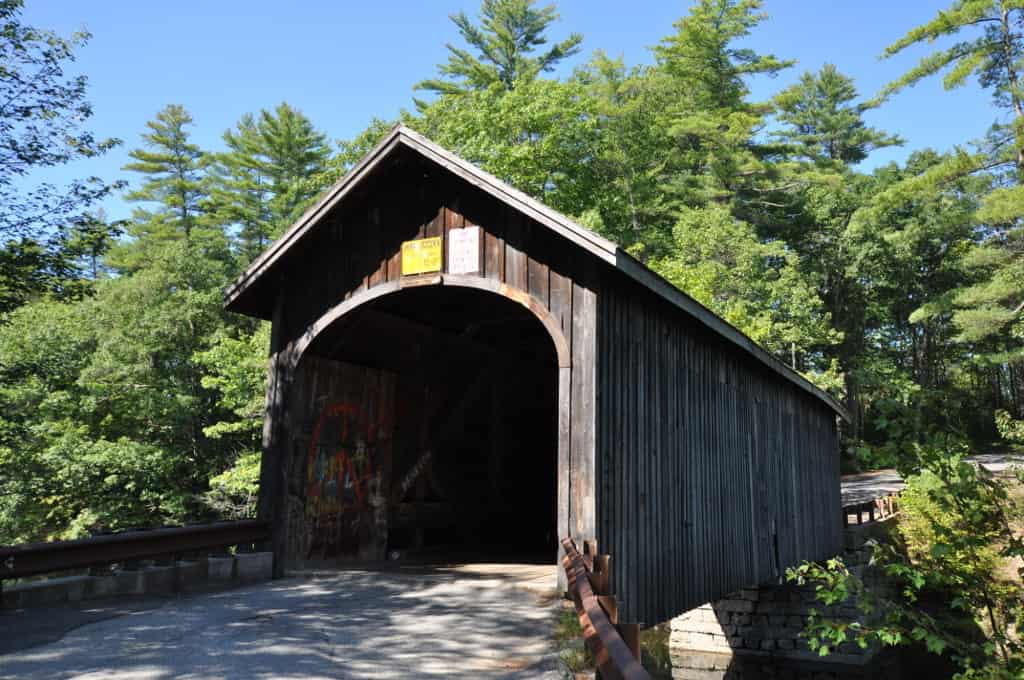
©Magicpiano / CC BY-SA 3.0 – License
Built in 1840, Babb’s Bridge is Maine’s oldest covered bridge. The 79-foot bridge connects the towns of Gorham and Windham in southern Maine by crossing the Presumpscot River. The bridge was named for the family that lived nearby when it was built.
Unfortunately, vandals burned Babb’s Bridge in 1973, destroying it completely. Maine’s Department of Transportation (MaineDOT) quickly set about rebuilding the bridge. The new bridge, completed in 1976, used lumber milled locally in Gorham to create an exact replica of the original, just reinforced to handle modern traffic.
Babb’s Bridge is one of the only historic covered bridges you can still drive across! However, it’s only big enough to fit one car at a time, so you may have to wait your turn to experience the historic crossing. Vandals still plague the bridge with graffiti and damages, but it’s watched over by local communities and MaineDOT.
Hemlock Bridge
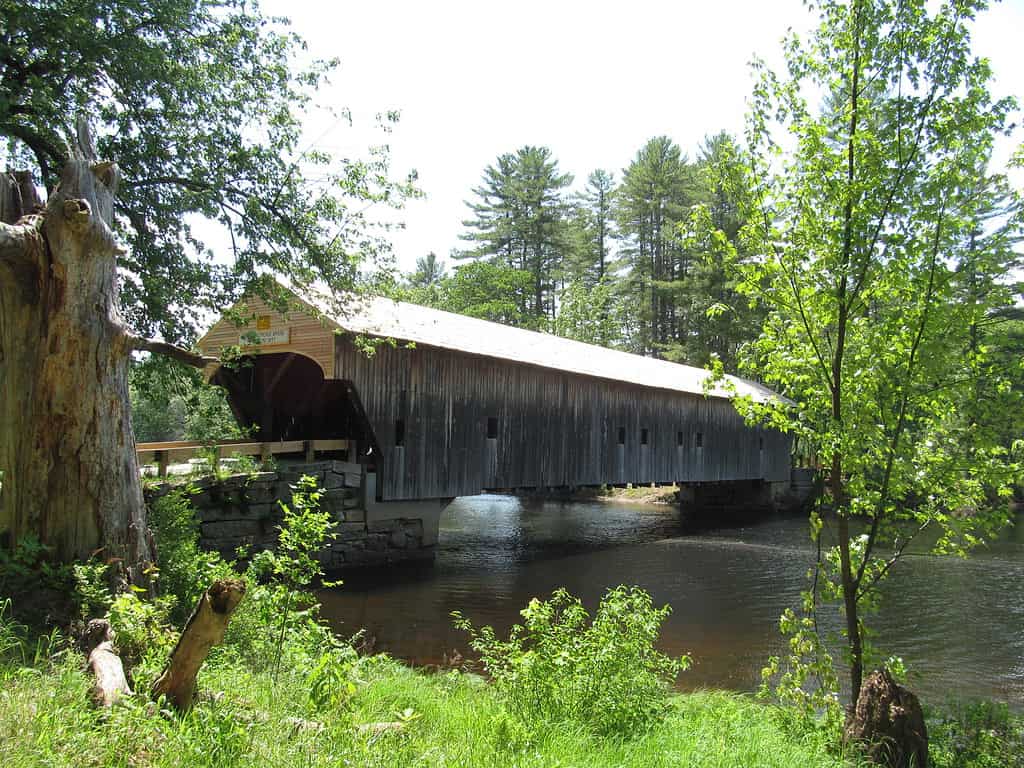
©Doug Kerr / CC BY-SA 2.0 DEED – License
Builders completed Hemlock Bridge in 1857 to cross what is now the Old Course Saco River in Fryeburg. The river is called “Old Course” due to canals rerouting the river in the early 1900s. The “Old Course” is what remains of the river’s original path. The bridge sits on granite feet, used to protect the base of the bridge when the river would flood in the spring.
Once upon a time, there were seven covered bridges in Fryeburg all crossing the Saco River. However, Hemlock Bridge is the only one that has withstood the test of time. It spans 116 feet in total to cross the river and has only needed slight repairs and reinforcements for heavier traffic over the course of its 160 years of life.
In 2002, the American Society of Civil Engineers named the Hemlock Bridge a Maine Historic Civil Engineering Landmark.
Lowes Bridge
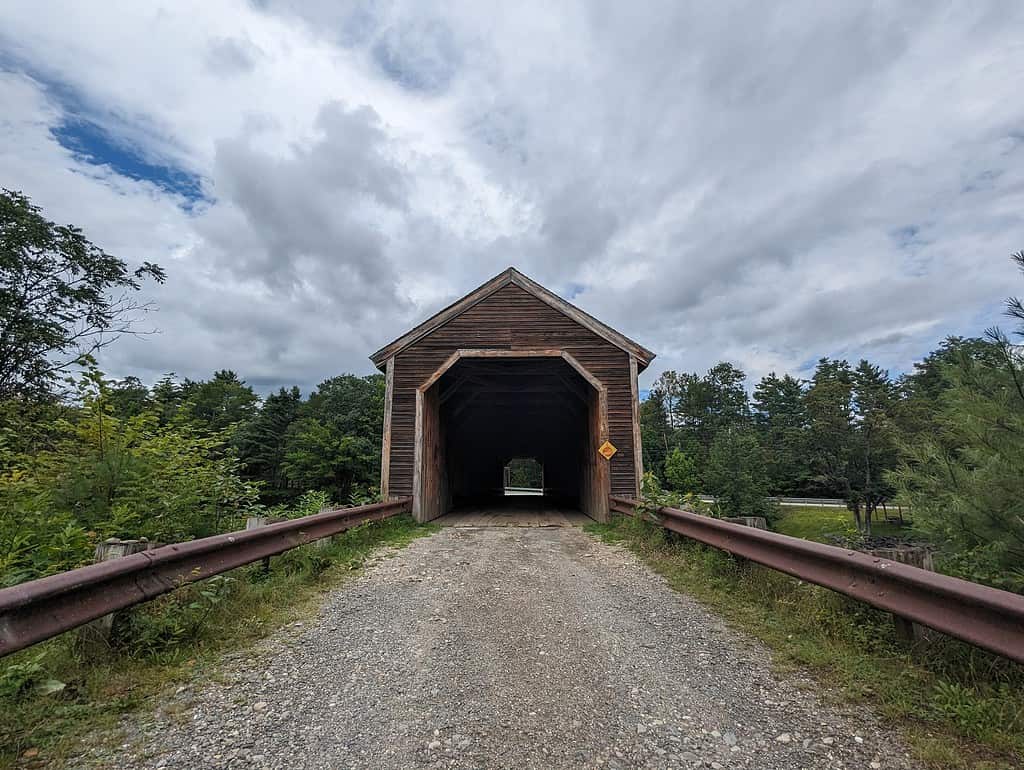
©Sarah Hutton / CC BY-SA 4.0 – License
Just south of Guilford Village, Lowes Bridge has crossed the Piscataquis River since 1857. The bridge stretches nearly 150 feet to cross the river. Unfortunately, a terrible flood in April of 1987 washed Lowes Bridge away.
Communities in the area decided to rebuild the bridge, using the original stone foundations, and completed the reconstruction in 1990. During the process, Lowes Bridge was reinforced with a higher weight capacity. Builders also raised the bridge in the hope of saving the structure from future floods.
Porter-Parsonsfield Bridge
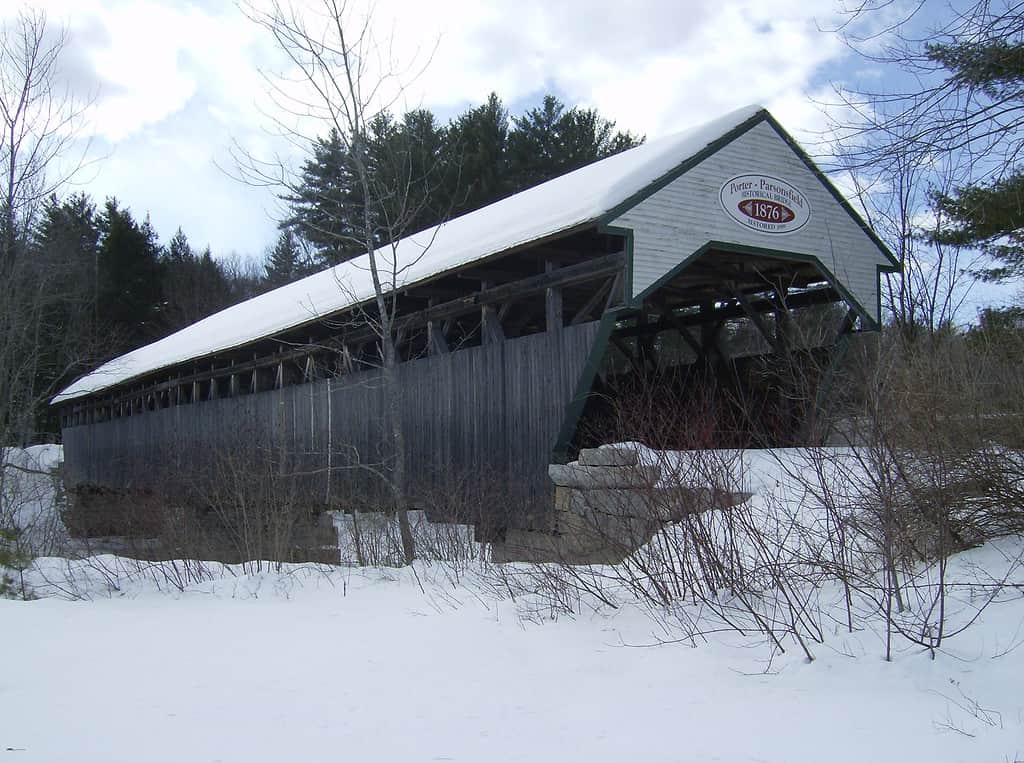
©Hugh Manatee at en.wikipedia / CC0 – License
The Porter-Parsonsfield Bridge is the third bridge built by the two towns it connects, Porter and Parsonsfield. By the time it was completed in 1859, both towns disagreed on how much of the bridge each would be financially responsible for. Thus, in its original form, each side was finished with different shingles, as the towns couldn’t agree.
The 152-foot bridge once carried the weight of being the main road across the Ossipee River, until a new bridge was built upstream in 1960. Since then, the Porter-Parsonsfield Bridge just carries pedestrians and bikes. The state took over the bridge’s maintenance in 1967 and completed a much-needed restoration, which included reroofing the mismatched shingles. The National Register of Historic Places listed the Porter-Parsonsfield Bridge in 1970.
Lovejoy Bridge
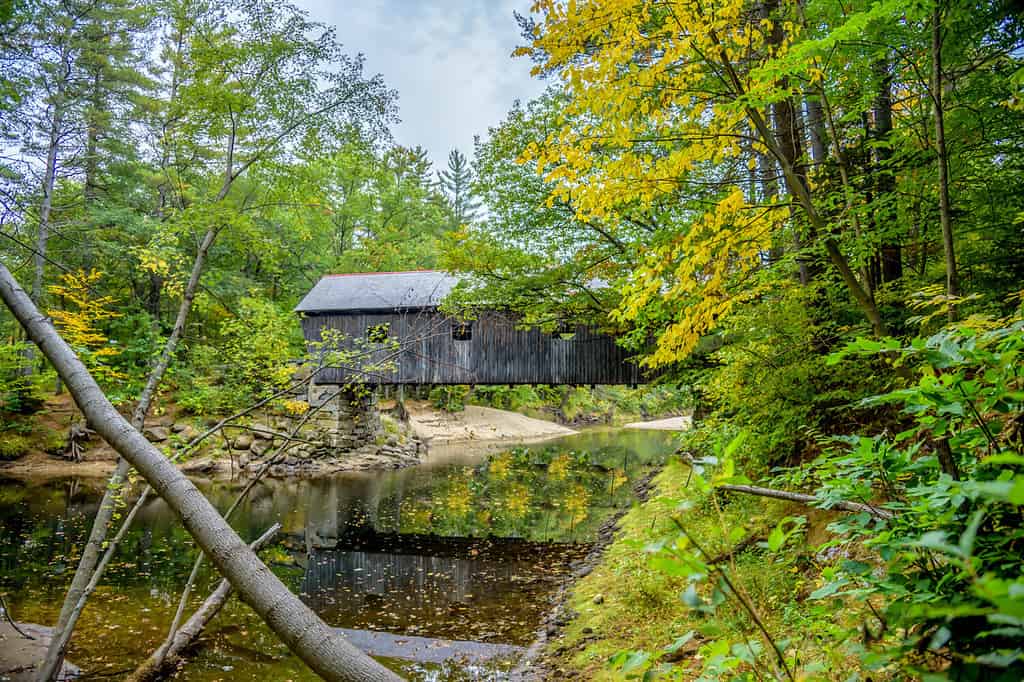
©mark stephens photography/Shutterstock.com
Known as Maine’s shortest covered bridge, Lovejoy Bridge spans 70 feet over the Ellis River near Andover. This bridge was built in 1868. However, it’s thought that there’s been a bridge in this spot for a very long time. The Ellis River narrows substantially in that spot, making it a natural crossing option.
The Lovejoy Bridge’s internal roadway only stretches 17 feet, making it a one-car bridge. It was named on the National Register of Historic Places in 1970. In 1983, a too-heavy sand truck fell through the deck of the bridge and was reconstructed and reinforced in 1984.
Sunday River Bridge
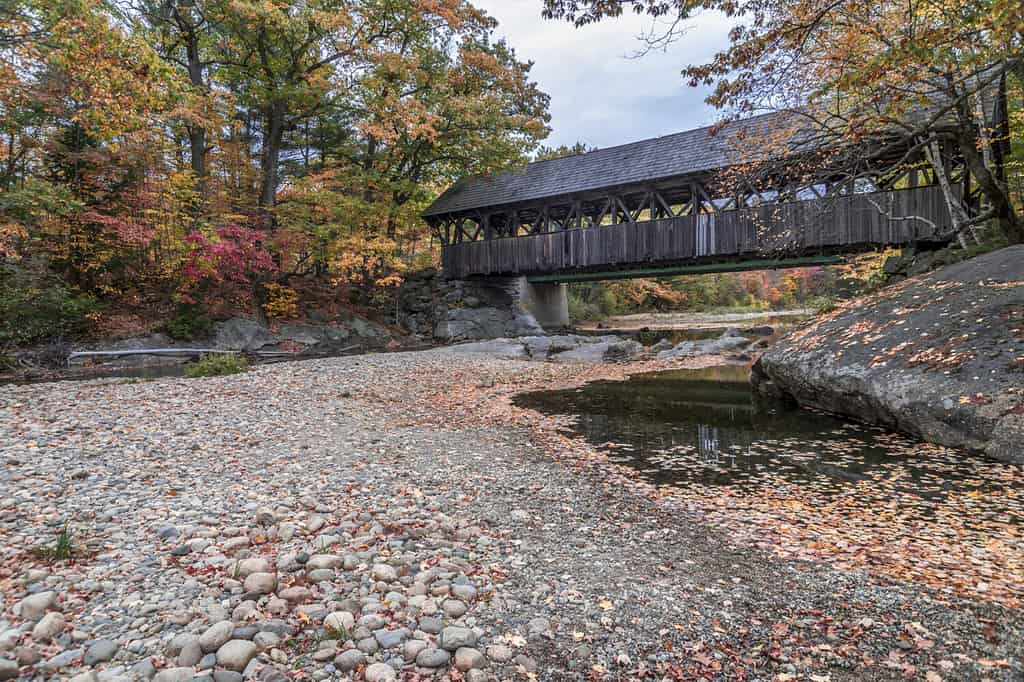
©brusign/Shutterstock.com
The Sunday River Bridge is reputed to be the most photographed and painted of Maine’s covered bridges, hence its second name as the Artist’s Bridge. Built in 1872, the Sunday River Bridge crosses the Sunday River near Newry with a length of 87 feet.
After two previous bridges failed in quick succession, builders paid special attention to the structural integrity of the Sunday River Bridge. Their attention to detail obviously worked, as the bridge still stands tall today. In 1955, a newer bridge rerouted vehicular traffic from the Sunday River Bridge, leaving it as a pedestrian-only bridge today. Similar to Maine’s other covered bridges, the Sunday River Bridge was listed on the National Register of Historic Places in 1970.
Robyville Bridge
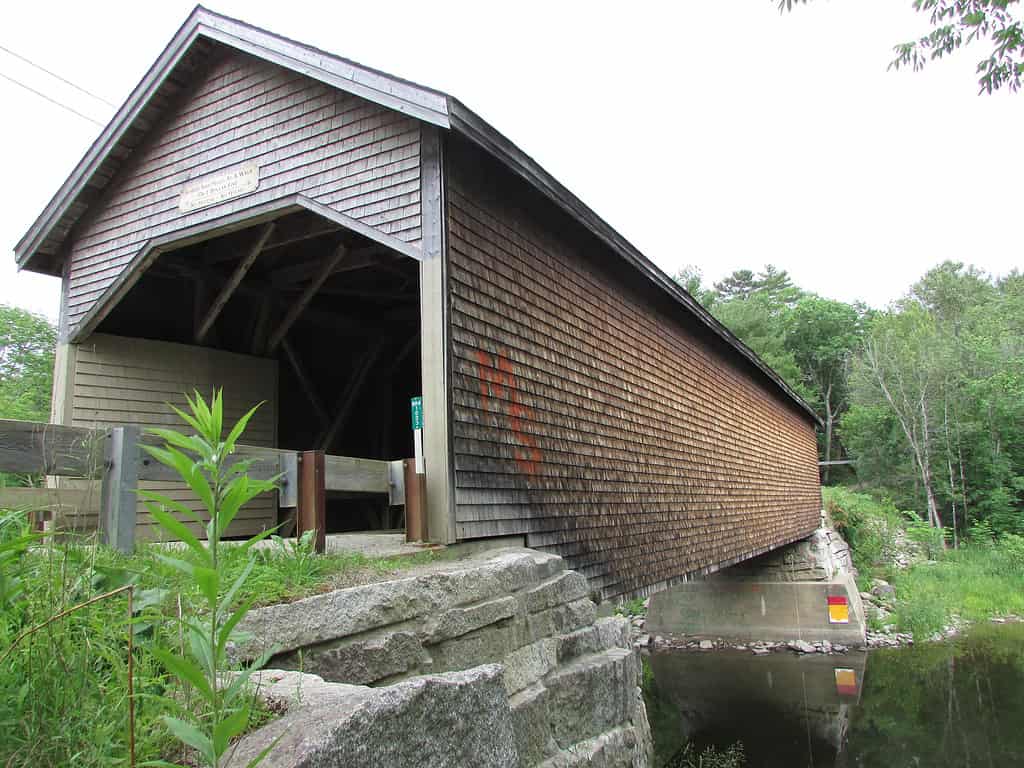
©DrStew82 / CC BY-SA 4.0 – License
Built in 1876, the Robyville Bridge is the only covered bridge in Maine to be completely shingled. Its roof and sides feature mixed shingling, unlike the other bridges which don’t use shingles on their walls. The Robyville Bridge crosses the Kenduskeag Stream near Corinth, spanning 73 feet between its rough-cut granite foundations.
In addition to its recognition on the National Register of Historic Places, the Robyville Bridge received its designation as a Maine Historic Civil Engineering Landmark in 2002. The bridge underwent a major rehabilitation project in 1984 and remains open to car traffic.
Bennett Bridge
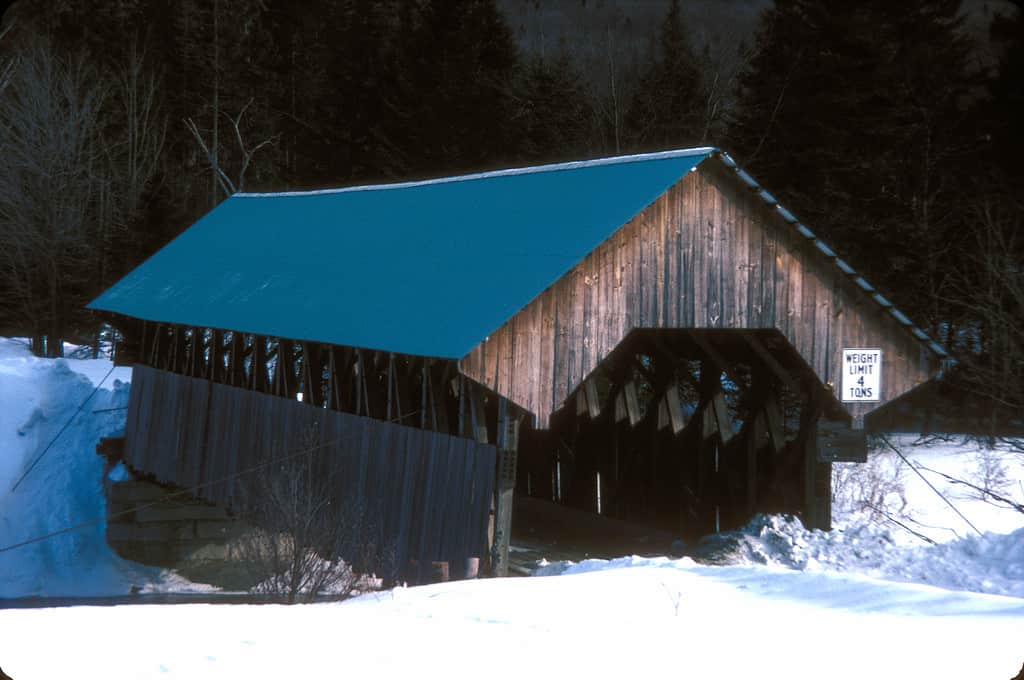
©JERRYE & ROY KLOTZ MD / CC BY-SA 3.0 – License
When it was built in 1901, Bennett Bridge primarily connected a collection of small farms in the area to Maine State Route 16, a major thoroughfare in Lincoln Plantation. The bridge survives as one of the last covered bridges built. The mid-1800s saw the introduction of cheaper metal and cast iron bridge parts. Since they didn’t rot like wood, these parts no longer needed the protection of a roof to survive the elements. By the 1900s, few covered bridges were still being built.
Bennett Bridge stretches 93 feet over the Magalloway River near Wilsons Mills. The bridge also utilizes wire cables for added stability. The heavy logging trucks working in the area frequently used the bridge, requiring the extra help. Today, Bennett Bridge is closed to car traffic but still offers a fantastic piece of history for pedestrians. The National Register of Historic Places included Bennett Bridge in 1970.
Summary
Covered bridges offer us a glimpse of the past, and Maine’s eight historic bridges are no exception. Driving or walking through any of the bridges’ portals can seem like a trip through time. It’s easy to see the care and attention to detail in the construction of these bridges, especially when compared to some of the more modern bridges throughout the state. Maine’s covered bridges offer a very different experience than the Deer Isle Bridge or the Penobscot Narrows Bridge. Also, since most of the state’s covered bridges have survived in more rural areas, visiting them feels even more like traveling back in time.
| Bridge Name | Year Built | Year Rebuilt |
|---|---|---|
| Babb’s Bridge | 1840 | 1976 |
| Hemlock Bridge | 1857 | |
| Lowes Bridge | 1857 | 1990 |
| Porter-Parsonsfield Bridge | 1859 | |
| Lovejoy Bridge | 1868 | 1984 |
| Sunday River Bridge | 1872 | |
| Robyville Bridge | 1876 | 1984 |
| Bennett Bridge | 1901 |









